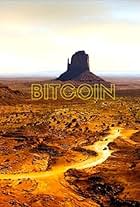IMDb RATING
6.9/10
1.4K
YOUR RATING
For anyone who has not fully understood the controversial Bitcoin yet, this is a concise and informative crash course about Money and Crypto Currencies.For anyone who has not fully understood the controversial Bitcoin yet, this is a concise and informative crash course about Money and Crypto Currencies.For anyone who has not fully understood the controversial Bitcoin yet, this is a concise and informative crash course about Money and Crypto Currencies.
- Awards
- 3 wins
John Barrett
- Self - Narration
- (voice)
Jeffrey A. Tucker
- Self - Economist
- (as Jeffrey Tucker)
Naomi Brockwell
- Self
- (scenes deleted)
Bruce Fenton
- Self
- (scenes deleted)
- Directors
- Writer
- All cast & crew
- Production, box office & more at IMDbPro
Storyline
Did you know
- GoofsMonica Barratt is listed as from 'University of New South Whales' Wales is misspelled.
- SoundtracksOde To Satoshi
Featured review
Bitcoin: The End of Money as We Know It is an hour-long documentary, split into two halves - one half focusing on the history of money and how the United States' currency went from being backed by gold to being backed by faith, and the other half, focusing on the potential of the digital "cryptocurrency" known as "Bitcoin" - predominately made up of infographs and charts to make its information digestible. We learn the philosophical idea behind currency, most importantly, how it is not created in addition to a government, but rather, long before any kind of government to establish some manner of obtaining scarce resources, and see how the idea of a currency dominated by governments and banks may be a thing of the past when it comes to Bitcoin.
I already did my best to explain what a Bitcoin was in my review for The Rise and Rise of Bitcoin - a documentary to which this particular film inevitably suffers by comparison, so I'll exercise brevity in trying to nail all the major points again. Bitcoin is a global, decentralized currency, not created nor distributed from a central location such as the Federal Reserve. Because of this, there is no sole owner of Bitcoin, for it exists on thousands of computers, with numerous tech-savvy internet users tracking, verifying, and distributing the digital currency - these people are known as "Bitcoin miners." The distribution of Bitcoins are kept on a digitized ledger, and, similar to filesharing, Bitcoin is transmitted in a peer-to-peer fashion. Finally, no more than twenty-one million Bitcoins will ever exist, making Bitcoin the first ever currency to have a cap. This prevents any kind of Federal Reserve practice such as "quantitative easing" from taking place in a time of economic disparity.
One interviewer in Bitcoin: The End of Money as We Know It refers to Bitcoin as potential for being a microeconomic worker, something that operates on a small scale of firms and businesses, or a macroeconomic wrecking-ball, something that can have leverage in the economy and influence the currency distribution around the world. Unlike with the U.S. Dollar, or for that matter, any currency from the Japanese Yen to the Russian Ruble, there is no middleman with the way Bitcoins are distributed. Not only is there no Federal Reserve, boasting an endless supply of Bitcoins, there's also no credit card company and no shady banking system. Bitcoin is the first currency to be created, dominated, and, most importantly, distributed by people.
Hundreds of years ago, when communities were small tribes, people's debits and credits were internalized in the mind of the individual, with no banking system whatsoever. The currency at the time was known as "commodity money," tangible items that had to be a combination of scarce, recognizable, divisible, portable, and easily distributed, such as grains, gold, or metal to be viewed as probable vehicles of transactions. Directors Torsten Hoffmann and Michael Watchulonis spend the first half hour outlining the history of paper currency's rise to dominance, particularly in the United States, with the creation of government bonds following acts of war and impending war debt and the government's response to The Great Depression. Upon spiraling into one of the worst depressions ever seen in the world, an embargo on gold was put into place and the U.S. relied on fiat money. Fiat money, in essence, is money backed by nothing other than your faith and trust in your government. It can be retracted or deemed worthless just as quickly as it was printed or handed to you by a clerk or your boss.
Bitcoin: The End of Money as We Know It tells its story largely through graphs and statistics, making it one of those documentaries you either choose to trust upon hearing the information or spend hours fact-checking online to see if its claims hold weight. The balance Hoffmann and Watchulonis achieve with statistics and interviews, largely from CEOs of websites, Bitcoin miners and organizers, and so forth, more or less make you forget that you're watching a documentary with more computer animation than some animated films.
The documentary's presentation is one that mirrors propaganda, in the way that it appeals to people by illustrating a black and white dichotomy, in this case, presenting the dollar and the American banking system as evil and Bitcoin and its process as flawless systems you must trust in order to be part of the digital revolution (aka "the winning side"). The Rise and Rise of Bitcoin presented the digital currency with all its flaws and potential shortcomings in tact, in addition to having skeptics have a say just as much as those who were furthering Bitcoin's progress and significance in their own homes. The End of Money as We Know It lacks that well-roundedness, and with all the time spent on detailing the history of currency, complex, lofty ideas of Bitcoin, its operations, and its rise are sacrificed in depth and illustration because of the concise runtime.
Bitcoin: The End of Money as We Know It may make a serviceable starting place for someone who has no idea what Bitcoin or its operation is, however, with a more elaborate and rounded documentary not far out of reach, it falls short in terms of trying to justify its existence.
Directed by: Torsten Hoffmann and Michael Watchulonis.
I already did my best to explain what a Bitcoin was in my review for The Rise and Rise of Bitcoin - a documentary to which this particular film inevitably suffers by comparison, so I'll exercise brevity in trying to nail all the major points again. Bitcoin is a global, decentralized currency, not created nor distributed from a central location such as the Federal Reserve. Because of this, there is no sole owner of Bitcoin, for it exists on thousands of computers, with numerous tech-savvy internet users tracking, verifying, and distributing the digital currency - these people are known as "Bitcoin miners." The distribution of Bitcoins are kept on a digitized ledger, and, similar to filesharing, Bitcoin is transmitted in a peer-to-peer fashion. Finally, no more than twenty-one million Bitcoins will ever exist, making Bitcoin the first ever currency to have a cap. This prevents any kind of Federal Reserve practice such as "quantitative easing" from taking place in a time of economic disparity.
One interviewer in Bitcoin: The End of Money as We Know It refers to Bitcoin as potential for being a microeconomic worker, something that operates on a small scale of firms and businesses, or a macroeconomic wrecking-ball, something that can have leverage in the economy and influence the currency distribution around the world. Unlike with the U.S. Dollar, or for that matter, any currency from the Japanese Yen to the Russian Ruble, there is no middleman with the way Bitcoins are distributed. Not only is there no Federal Reserve, boasting an endless supply of Bitcoins, there's also no credit card company and no shady banking system. Bitcoin is the first currency to be created, dominated, and, most importantly, distributed by people.
Hundreds of years ago, when communities were small tribes, people's debits and credits were internalized in the mind of the individual, with no banking system whatsoever. The currency at the time was known as "commodity money," tangible items that had to be a combination of scarce, recognizable, divisible, portable, and easily distributed, such as grains, gold, or metal to be viewed as probable vehicles of transactions. Directors Torsten Hoffmann and Michael Watchulonis spend the first half hour outlining the history of paper currency's rise to dominance, particularly in the United States, with the creation of government bonds following acts of war and impending war debt and the government's response to The Great Depression. Upon spiraling into one of the worst depressions ever seen in the world, an embargo on gold was put into place and the U.S. relied on fiat money. Fiat money, in essence, is money backed by nothing other than your faith and trust in your government. It can be retracted or deemed worthless just as quickly as it was printed or handed to you by a clerk or your boss.
Bitcoin: The End of Money as We Know It tells its story largely through graphs and statistics, making it one of those documentaries you either choose to trust upon hearing the information or spend hours fact-checking online to see if its claims hold weight. The balance Hoffmann and Watchulonis achieve with statistics and interviews, largely from CEOs of websites, Bitcoin miners and organizers, and so forth, more or less make you forget that you're watching a documentary with more computer animation than some animated films.
The documentary's presentation is one that mirrors propaganda, in the way that it appeals to people by illustrating a black and white dichotomy, in this case, presenting the dollar and the American banking system as evil and Bitcoin and its process as flawless systems you must trust in order to be part of the digital revolution (aka "the winning side"). The Rise and Rise of Bitcoin presented the digital currency with all its flaws and potential shortcomings in tact, in addition to having skeptics have a say just as much as those who were furthering Bitcoin's progress and significance in their own homes. The End of Money as We Know It lacks that well-roundedness, and with all the time spent on detailing the history of currency, complex, lofty ideas of Bitcoin, its operations, and its rise are sacrificed in depth and illustration because of the concise runtime.
Bitcoin: The End of Money as We Know It may make a serviceable starting place for someone who has no idea what Bitcoin or its operation is, however, with a more elaborate and rounded documentary not far out of reach, it falls short in terms of trying to justify its existence.
Directed by: Torsten Hoffmann and Michael Watchulonis.
- StevePulaski
- Aug 5, 2015
- Permalink
Details
- Release date
- Countries of origin
- Official sites
- Language
- Also known as
- Биткойн: Конец денег, какими мы их знаем
- Filming locations
- Production company
- See more company credits at IMDbPro
Box office
- Budget
- $100,000 (estimated)
- Runtime1 hour
- Color
- Aspect ratio
- 16:9 HD
Contribute to this page
Suggest an edit or add missing content

Top Gap
By what name was Bitcoin: The End of Money as We Know It (2015) officially released in Canada in English?
Answer






























